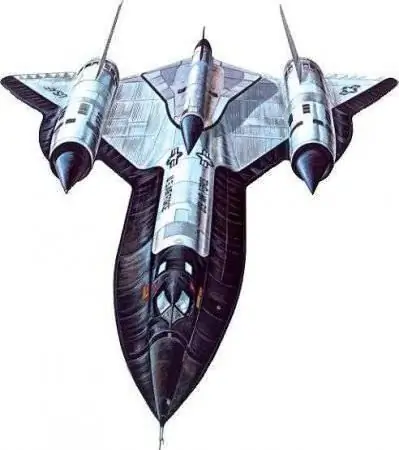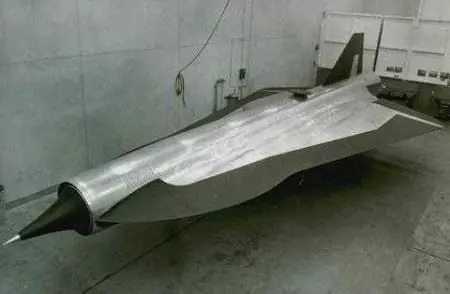- Author Matthew Elmers [email protected].
- Public 2023-12-16 21:49.
- Last modified 2025-01-24 09:17.

The program was launched in 1962. It envisaged the creation of a complex for conducting reconnaissance deep behind enemy lines. The UAV had to carry one high-resolution camera.
In the early 60s, the development of a promising reconnaissance aircraft began. The work on the creation of the aircraft was then taken over by the top-secret branch of the Lockheed company, known as the Skunk works. To create a technical assignment, studies were carried out, the purpose of which was to assess the influence of various aircraft parameters on the probability of hitting an enemy air defense aircraft. We can say that this was the first incident when the developers measured the RCS of an aircraft.
The A-12 high-altitude reconnaissance aircraft developed under this program had characteristics that were unique for its time. The hull was 85% titanium, which was due to the high flight speeds at which the aircraft skin was heated from friction against the air. The skin could withstand prolonged heating at 210 degrees Celsius.
The aircraft had a top speed of 3,300 km / h and a ceiling of almost 30,000 meters. It became the prototype for the SR-71 reconnaissance aircraft.
In 1962, the CIA, together with the US Air Force, ordered the development of a high-altitude high-speed UAV. The task was entrusted to Skunk works. It was decided to use the A-12 aircraft as a UAV carrier. The UAV received the code Q-12. It used all the key technologies of the A-12, such as the wing shape and titanium body.

The UAV had a ramjet engine. The engine was originally developed for the CIM-10 Bomarc program, which was developing a long-range surface-to-air missile. The engine was upgraded to run on a fuel (JP-7) similar to that of the carrier aircraft.
The test version was ready in December 1962. Tests have shown that the UAV has an extremely low ESR. The tests in the aerodynamic tube have shown that the calculations of the developers are correct. The army immediately became interested in this device, and the military was interested in the use of UAVs both as a reconnaissance and as a cruise missile. In May 1963, Skunk works received the green light to create a full-fledged model and to conduct tests. The A-12 aircraft was redesigned, it was made two-seater and the rear part was slightly changed for attaching the UAV. 2 such aircraft were created.

The first successful test took place in 1966. In the same year, successful launches were made at a speed of 3.3M and an altitude of 27,000 m. In the same year, there was a disaster at a speed of 3M, the UAV caught the carrier plane, after which both collapsed. Both pilots ejected and splashed down, but only one survived the crash, the second suffocated due to depressurization of the suit.
Video: Lockheed D-21 / M-21






